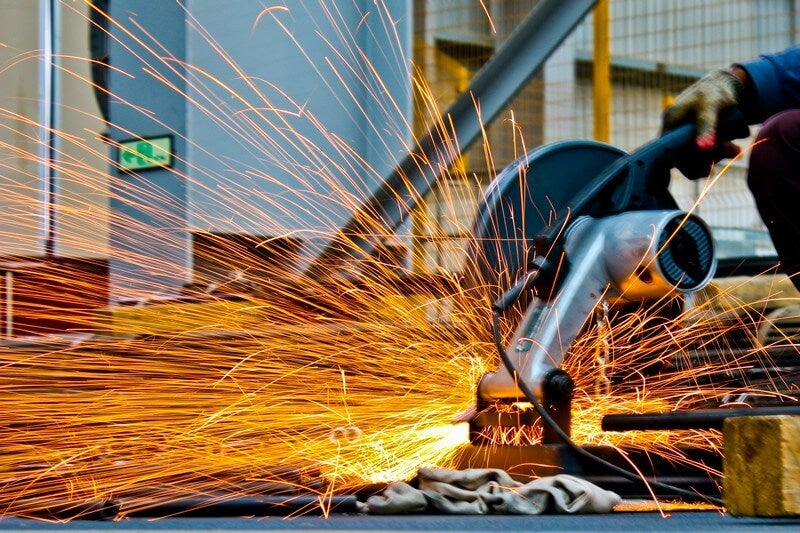Table of contents
Buying equipment for your business is a big investment. But most times, it can also come with big tax benefits. Knowing how to take advantage of these benefits, especially through Section 179 and bonus depreciation, can help small to mid-sized businesses keep more cash on hand and strengthen their bottom line.
This guide breaks down how to write off equipment purchases, what those deductions mean for your finances, and how to make smart, tax-savvy decisions that pay off now and later.
It’s no secret—in business, every dollar matters. That’s why experts suggest using tax incentives for equipment purchases. It can free up valuable capital, lower your taxable income, and give you the flexibility to reinvest where it counts most.
Whether you’re upgrading outdated machinery, adding new technology, or expanding production, understanding how these tax strategies work helps you turn necessary investments into real financial gains.
What is section 179?
Section 179 of the Internal Revenue Code lets businesses deduct the full purchase price of qualifying equipment and software bought or financed during the tax year. It’s essentially a reward for reinvesting in your business—allowing you to write off the cost of new assets instead of spreading the deduction over several years.
Rather than depreciating the asset gradually, Section 179 lets you deduct the entire cost in the year you buy it. That means an immediate reduction in taxable income—a major advantage for companies looking to offset profits or reinvest savings into growth.
In short, Section 179 helps you invest confidently in the tools and technology your business needs today, without waiting years to see the financial benefit.
How does section 179 work?
Section 179 is pretty straightforward: if you buy or lease qualifying equipment, you can deduct the full purchase price from your gross income for that tax year. The rule applies to both new and used equipment, as long as it’s used for business more than 50% of the time.
In practice, the process is also straightforward. Choose eligible assets, place them in service during the tax year, and record the deduction on your return. The idea is to make capital planning easier and encourage businesses to keep upgrading their tools, tech, and machinery.
This deduction is especially valuable for businesses expecting to turn a profit, since it’s limited by your taxable income. But if your deduction amount exceeds that limit, you can often carry the excess forward to future years so the benefit doesn’t go to waste.
What qualifies for section 179?
To qualify for the Section 179 deduction, the equipment must be tangible, depreciable, and used for business purposes. That includes items like machinery, office furniture, computers, printers, manufacturing tools, and certain business vehicles. (Important: Items such as real estate, land, or assets used outside a business capacity do not qualify.)
Both new and used equipment can qualify as long as it’s new to your business and purchased, not leased. Each year, the IRS updates the deduction limits and phase-out thresholds, so staying current on those numbers is key.
If your total equipment purchases for the year exceed the set limit, your deduction starts to phase out. That cap is meant to keep the incentive focused on small and mid-sized businesses rather than large corporations.
Bonus depreciation: an additional tax benefit
Beyond Section 179, there’s another powerful incentive: bonus depreciation. This provision lets you deduct a large percentage of an asset’s cost in the first year it’s put into service, speeding up how quickly you recover your investment.
Unlike Section 179, bonus depreciation can be used even if your business shows a loss, which means it can create a net operating loss you may carry forward to future years. That flexibility can make a big difference for growing companies balancing expansion costs with fluctuating profits.
Bonus depreciation generally applies to assets with a recovery period of 20 years or less. It covers not only new but also used equipment acquired from unrelated parties, adding flexibility to your capital expenditure planning.
Comparing section 179 and Bonus Depreciation
Section 179 and bonus depreciation both help you save money upfront, but they work a little differently.
Section 179 has a deduction limit and a phase-out threshold. Once your total equipment purchases exceed that threshold, the deduction starts to shrink. Bonus depreciation, on the other hand, doesn’t have a cap. You can use it even after maxing out your Section 179 deduction, giving you another layer of tax savings in the same year.
There’s also a key difference in how they affect your taxable income: Section 179 can’t create a loss, while bonus depreciation can. That makes bonus depreciation especially useful for businesses with uneven profits or years when income dips because you can still take advantage of the deduction and carry the benefit forward.
Understanding how these two tools complement each other allows you to plan your equipment purchases and financing in a way that maximizes savings and supports long-term growth.
Tax benefits of equipment purchases
Using Section 179 and bonus depreciation helps reduce your taxable income, lower your tax bill, and free up capital you can reinvest in growth, innovation, or day-to-day operations.This enables you to preserve resources for growth, innovation, or managing unexpected expenses.
Immediate write-off benefits
The biggest advantage of these deductions is timing. You can write off the entire cost of qualifying equipment in the same year you buy it. That upfront deduction can dramatically improve cash flow by cutting your current-year tax burden and accelerating your return on investment.
Instead of waiting for savings to trickle in over several years through traditional depreciation, you get the benefits upfront, giving your company the agility to pivot, invest, or expand as needed. For startups and growing businesses, that immediate liquidity can be crucial to staying competitive and seizing new opportunities as they appear.
Improved cash flow
Reducing taxable income means keeping more of your own cash in play. That improved liquidity gives you room to hire, invest in marketing, fund R&D, or upgrade infrastructure without stretching your budget.
A healthier cash position can also boost your credit profile and make your business more attractive to lenders or investors. In short, strategic equipment purchases don’t just build capacity, they also build financial flexibility.
Common tax mistakes to avoid
The tax advantages of equipment purchases can be substantial, but only if you apply them correctly. A few common oversights can lead to missed deductions or compliance issues that cost you money down the line.
Misunderstanding eligibility
One of the most frequent missteps is assuming every purchase qualifies for Section 179. To count, the asset must be tangible, depreciable, and used primarily for business purposes. Things like inventory, leased property you don’t own, or items acquired from related parties generally don’t qualify.
It’s also essential to document how the equipment is used. If the IRS questions your deduction, a lack of records showing business use could disqualify it entirely.
Overlooking bonus depreciation
Many businesses stop at Section 179 and forget about bonus depreciation, which can offer additional savings—especially in lower-income years. Using both in tandem can maximize your deductions and help you create or carry forward a net operating loss to offset future income.
Failing to plan for phase-outs
Section 179 deductions begin to phase out once your total equipment purchases exceed the annual threshold. If you’re not planning purchases around those limits, you could lose part of the deduction. A quick conversation with your accountant or financial advisor before year-end can help you time acquisitions strategically and capture the full benefit.
Your path forward
Understanding how Section 179 and bonus depreciation work is more than just a tax exercise; it's; also a strategic move for long-term growth. For small and mid-sized businesses, these tools can significantly reduce tax liabilities, strengthen cash flow, and create more room to reinvest in what’s next.
By using these deductions wisely, you give your business the financial agility to adapt, expand, and stay competitive even when markets shift. But timing and accuracy matter, so it’s important to consult a qualified tax professional to ensure you’re maximizing deductions and staying compliant with current IRS rules.
With the right planning, every equipment purchase becomes more than a necessary expense. It becomes an opportunity to fuel your business’s next stage of growth. Ready to take your business to the next level? Apply today with our quick digital application.






